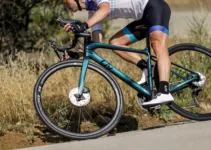A properly fitting bike is an absolute must for any cycling enthusiast, from the seasoned professional to the weekend warrior. An ill-fitting bike can lead to discomfort, inefficient riding, and even long-term injuries. This article provides a comprehensive guide to achieving the perfect bike fit for your individual needs.
Understand the Importance of Proper Bike Fit
A bike that fits you well provides comfort, enhances your cycling efficiency, and prevents injuries associated with long-term riding. A proper bike fit will allow you to ride longer, faster, and with more pleasure.
Select the Right Bike Type
Your bike’s type should match the kind of riding you’ll be doing. Road bikes, mountain bikes, hybrid bikes, and commuter bikes all have different designs and fits. A bike shop can help guide you in your selection based on your intended use.
Get the Correct Frame Size
The frame is the heart of your bike, so ensuring it fits you well is crucial. Frame size is typically measured by the distance from the center of the bottom bracket to the top of the seat tube. Your height and inseam length are key factors in determining the correct frame size.
Adjust the Saddle Height
Your saddle height affects your comfort and pedaling efficiency. A saddle positioned too high can cause hip discomfort and make you shift from side to side. If it’s too low, you might experience pain in the front of your knees. To adjust, sit on the saddle with your heel on the pedal at its lowest point. Your leg should be straight without you having to stretch or shift your hips.
Position Your Saddle Properly
The saddle should not only be at the correct height, but also at the correct position. If your saddle is too far forward or backward, it can affect your balance, strain your lower back, or cause knee pain. A general rule of thumb is to position the saddle so that your knee is directly over the pedal spindle when the cranks are horizontal.
Fine-Tune the Handlebar Height and Reach
Handlebar position impacts your comfort, control, and the weight distribution on your bike. Your handlebars should be at a level that allows your back to lean at a 45-degree angle from your waist. The reach should allow a slight bend in your elbows when you grasp the handlebars, promoting good control and shock absorption.
Consult a Professional
If you’re uncertain about your bike fit or experiencing discomfort despite adjustments, consider getting a professional bike fit. A professional fitter can provide a comprehensive evaluation and personalized recommendations based on your body’s biomechanics and your cycling goals.
To sum up, finding the perfect bike fit involves understanding your cycling needs, selecting the right bike type, adjusting the saddle, and fine-tuning the handlebar position. Remember, each cyclist is unique, so what works for someone else might not work for you. It’s important to listen to your body and make adjustments as needed. Happy riding!


